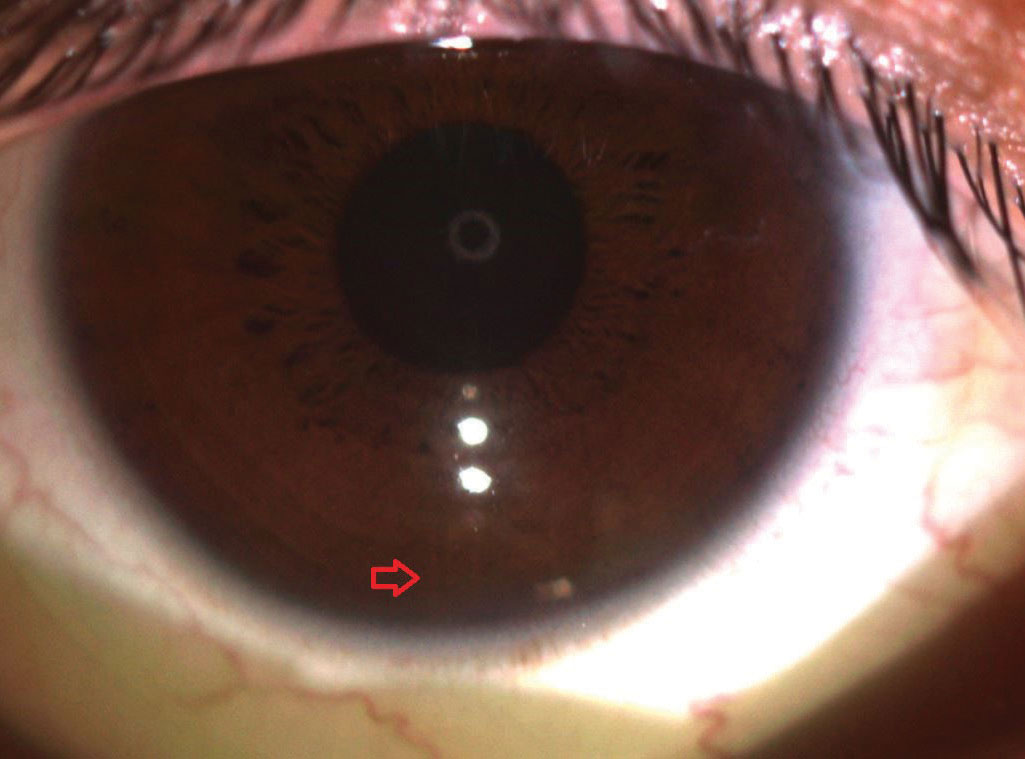 |
In optometry school, we are trained to refract patients to 20/20 and undercorrect, rather than overcorrect, cylinder in contact lens prescriptions. However, in patients with higher visual demands, such as athletes, this may lead to subpar visual performance. If so, it’s time to challenge our assumptions.
The Case
A 21-year-old male presented for an eye exam complaining that the vision in his right eye was blurry with contact lenses. He went through several iterations with his previous optometrist but said his vision never seemed right. He played collegiate golf, so his vision and depth perception were very important to his performance and ability to follow the small, high-velocity balls. However, he was having trouble finding his golf balls, and he said his depth perception seemed off at close distances.
His presenting visual acuities (VAs) were 20/25- OD and 20/15 OS, and he was wearing Acuvue Oasys (Johnson & Johnson) with a prescription of 8.4 -1.25 over-refraction plano OD and 8.4 -1.00 over-refraction plano OS.
Contact Lens Evaluation
Manifest refraction revealed:
- -1.75 +0.50x070 (VA of 20/15) OD
- -1.00 (VA of 20/15) OS
The patient’s slit lamp exam revealed clear lids, lashes and conjunctiva with deep and quiet anterior chambers OU. His cornea, lids and irises were clear and normal OU. His intraocular pressures were 10mm Hg OD and 11mm Hg OS. The undilated posterior segment evaluation was within normal limits. His autokeratometry readings were 43.00/43.50 @173 OD and 43.00/43.25 @162 OS.
I explained to the patient that the uncorrected astigmatism in his contact lens was affecting his visual acuity and discussed further options with him, one of which involved over-correcting the cylinder with a soft toric lens. He was on board and wanted to give it a try.
 |
| This soft toric lens aligns at 6 o’clock. |
Contact Lens Fitting and Dispensing
The following Acuvue Oasys lenses were placed on the patient and evaluated:
- 8.6/-1.00-0.75 x165 (VA of 20/15) OD
- 8.4 (VA of 20/15) OS
The patient was extremely happy with the in-office performance of the trial lenses, so they were dispensed.
Follow-up
The patient returned a week later and reported clearer vision and better binocularity. The fit was finalized.
Discussion
Because each sport has its own unique demands, certain athletes have more visual demands than others. When assessing small balls that move at high speeds, VA and contrast can have a large impact on a golfer’s performance, which can be negatively affected by axis mislocation, poor centration and imprecise cylinder correction.1,2
Some patients are more sensitive to cylinder than others. We know this because we all have those patients who can confidently choose one or two even though we are making the most minute adjustments to check cylinder, whereas others hem and haw and can’t decide. Patients with lower power-to-cylinder ratios are typically more sensitive to cylinder changes than those with higher ratios. For example, a -1.00D patient with 0.75D of cylinder will most likely see a difference with spherical contact lenses compared with glasses while a -6.00D with 0.75D of cylinder may not notice a difference.
Sensitivity to changes in cylinder rotation is one of the reasons we are taught to undercorrect cylinder in contact lenses; the higher the cylinder, the more sensitive the patient will be to lens rotation, which causes blur.2 Some patients prefer constant slight blur over variable clarity, which makes us more likely to undercorrect cylinder than to overcorrect it. In this case, however, an overcorrection of cylinder gave the patient two additional lines of acuity and improved his visual performance.
Luckily, we have several choices when correcting cylinder. Planned replacement lenses are usually available in high oxygen materials and more cost-efficient for patients. However, they are only available in limited parameters, and it’s the practitioner’s job to decide if customization is needed. In this case, if a soft planned replacement toric hadn’t worked for this patient, a custom-ordered soft lens would have been the next step. If the patient is sensitive to axis rotation, rigid gas permeable, scleral or hybrid lenses would be worth looking into since the performances of these lenses do not depend on rotational stability.
1. Kirschen DG, Laby DM. Contact lenses for sports: a new ball game. Cont Lens Spec. December 1, 2006. [Epub ahead of print]. 2. Bennet ES, Henry VA. Correction of astigmatism. Clinical Manual of Contact Lenses. 3rd edition. Philadelphia. 2009. |


